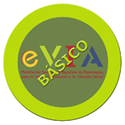SAVIA
Educational platform for people with autism
The SAVIA project consists in developing and testing new educational tools for children with autism spectrum disorder (ASD). To date there are three groups of video games which children with autism can play with other children, their educators or their parents to learn skills that are crucial for their development.
Specifically, the first aim of the video games is for children to "learn how to learn", and the pedagogy is therefore based on fundamental elements of autism intervention, such as visual structure, visual clarity, staggered learning, pictograms and other principles commonly found in autism intervention programs. The games also address the "discovery of one's surroundings", maximizing the possibilities of virtual reality so that the children can manipulate the virtual environment and learn basic visual and spatial concepts (shapes, sizes, colors, position, quantity, etc.). Once the visual structure and the basic concepts have been mastered, SAVIA offers a complete video game for "reference communication" intervention, a collaborative tool that works with other programs (technological and non-technological) aimed at boosting the development of communication in children with ASD.
Education
In order to design the SAVIA pedagogy, an in-depth bibliographical study was undertaken to identify the key development skills of children affected by autism. The intervention programs with the greatest proven efficiency in improving these skills were also analyzed in an attempt to go one step further and harness the enormous potential offered by the innovative technologies used in SAVIA.
Educational goals
In order to perform activities autonomously, people with autism need a clear and stable visual structure that guides them every step of the way, providing answers to following basic questions:
- What work do I have to do?
- How much do I have to do?
- How do I know I am making progress, how do I know when I have finished, and where do I put the work when I have finished it?
- What do I do next?
To support these needs, the field of educational intervention in autism uses what is known as an "individualized system of work". This is one of the basic strategies of the TEACCH Program (Mesibov and Howley, 2010) and it has been used in numerous countries for several decades. Inspired by this program, SAVIA creates a small virtual space geared toward individual work, with or without assistance.
The objective is for children with ASD to become familiar with the elements of the individualized system of work, guided by a tasks panel, an inbox, a work space, a sequence of steps to follow, and an outbox. These milestones correspond to the needs expressed in the aforementioned visual structure, adapted in this case for the Learn How to Learn game.
In learning the dynamics of this system and autonomously performing a group of basic elementary tasks (pairing, cause-effect and other basic activities), we can assert that, to a certain extent, users will have "learned how to learn": hence the name chosen for this game.
Using the same structure as the Learn How to Learn game, this second SAVIA game aims to help children learn more complex concepts associated with understanding the physical environment:
- Spatial concepts (size, height, width, position, etc.)
- Visual concepts (shape, color, texture, etc.)
- Quantitative concepts (one, two, three, etc.; many-few, all-nothing, etc.)
Unlike the first game, the aim in this case is for the users to actually learn by performing the activities in each box, the assumption being that in order to play this game the child will have already mastered the first one and can therefore work with a certain amount of autonomy. Consequently, and based on the individualized system of learning, a series of activities have been developed and placed in a set of "boxes", complemented by other activities that are performed using the elements of the virtual classroom. As in the previous game, the sequence of work is organized around a panel of activities, each of which corresponds to a box or an activity completed using the elements in the virtual classroom (chairs, desks, etc.).
Inspired by the traditional reference communication task of arranging a room (Boada&Fons), this collaborative video game reproduces the status of communication between two people who have access to the same set of objects but cannot see the other person's set of objects and yet have to copy the distribution.
The dynamics of the game are as follows:
- The speaker and listener each have access to the same set of objects.
- The listener has to copy the speaker's distribution of the objects.
- Neither of them can see the other's distribution of the set of objects.
- The speaker has to convey the qualities and position of an object to the listener in a way that enables the latter to identify it and place it in his or her own set of objects.
Depending on the level of difficulty, there are more or fewer objects, with a greater or smaller variety of colors, sizes and rotation. The type of communication can also be selected in the same way, i.e. from lesser to greater difficulty, using pictograms, pictograms+words, only words or only voice.
Downloads


Related links
